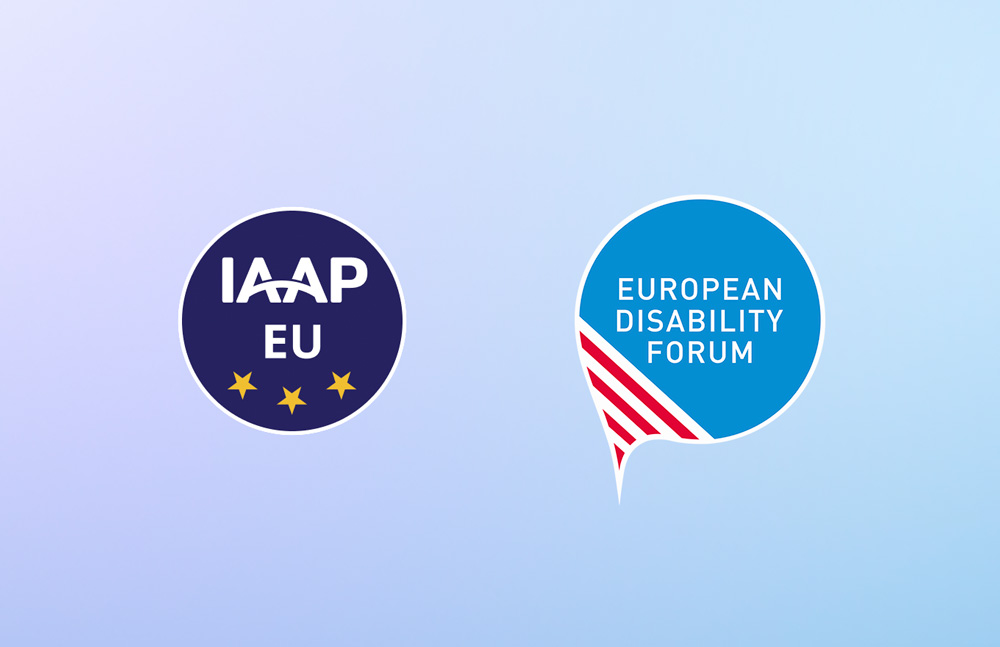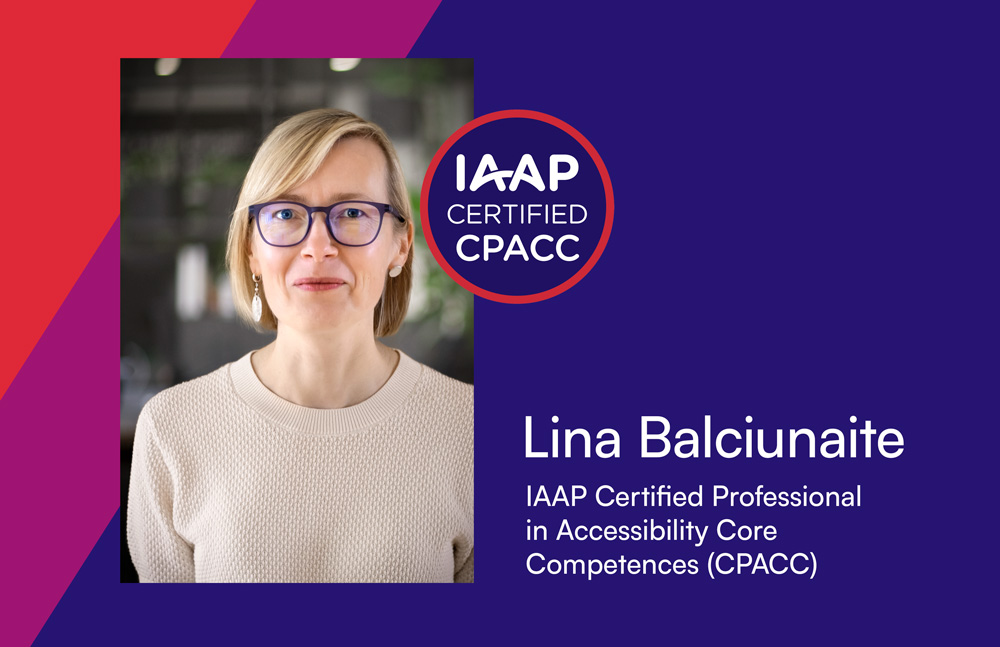Understanding Web Accessibility and Its Standards (WCAG): A Beginner's Guide

In the digital age, web accessibility has emerged as an essential concept, one that's rooted in the principles of inclusivity and equal access for all. But what exactly is web accessibility, and why is it so crucial? This article aims to demystify the world of web accessibility, starting with a clear definition and an exploration of its far-reaching benefits.
We'll explore various types of disabilities web accessibility addresses, highlighting that it's not limited to permanent conditions alone. And, to shed light on how web accessibility is ensured, we'll provide an overview of the pivotal Web Content Accessibility Guidelines (WCAG).
Web accessibility definition
Web accessibility involves designing and developing websites and web content to ensure that people with disabilities can effectively perceive, understand, navigate, and interact with the web.
The primary objective of web accessibility is non-discrimination.
It necessitates making digital information and services accessible to all, irrespective of their physical or cognitive abilities. This inclusive approach fosters equal access and a more user-friendly online experience. Read more about the benefits of web accessibility here
Types of disability
Although we often associate accessibility with accommodating individuals with permanent disabilities, it greatly enhances the experience for various other groups.
This means disability isn't limited to permanent conditions like deafness or blindness; it can also be temporary or situational.
Permanent disabilities
These disabilities are long-lasting or even lifelong, and they typically do not improve with time. Examples of permanent disabilities include:
- Hearing problems (eg. deafness, hearing loss over time)
- Visual impairments (eg. blindness, low vision)
- Thinking or learning difficulties (eg. dyslexia, attention deficit disorder, autism spectrum disorder)
- Issues with the brain or nervous system (eg. epilepsy, cerebral palsy, Alzheimer's)
- Physical disabilities (eg. paralysis or tremors, which result in limited or no physical mobility)
- Trouble with speaking (eg. muteness, voice disorders)
Temporary disabilities
These are impairments that are not long-lasting and may change over time. They can result from accidents, injuries, or illnesses. Examples of temporary disabilities include:
- Broken bones, such as a fractured arm
- Recovery from surgery (after certain surgeries, individuals may experience temporary mobility limitations)
- Illnesses (conditions like infections that cause temporary discomfort and limitations)
- Temporary vision impairments (eg. when someone loses their glasses or contact lenses)
Situational disabilities
Situational disabilities are temporary limitations that individuals may experience in specific situations or environments. They are not related to a person's inherent physical or cognitive condition but rather the circumstances they are in. Examples of situational disabilities include:
- Temporary hearing impairment: Struggling to hear in a noisy environment.
- Temporary mobility restrictions: Occurs when carrying heavy bags or navigating crowded spaces.
- Temporary visual impairment: Occurs in situations with intense sunlight or bright lights.
- Temporary cognitive limitations: Arise when external factors, such as noise, make it difficult to concentrate and comprehend web content.
Web accessibility is useful for all
Web accessibility benefits every each of us by making digital content and services more user-friendly. It enhances overall usability, providing clearer navigation and readability.
For example, captions in videos help not only those who are deaf but also anyone in a noisy environment. Text-to-speech functionality assists those with visual impairments and can also be convenient for multitasking.
Ultimately, web accessibility ensures a more inclusive and enjoyable online experience, regardless of specific abilities or circumstances.
Web accessibility is useful for businesses
Web accessibility benefits businesses and organizations by expanding their customer base to include individuals with various types of disabilities, increasing market reach. Additionally, it enhances user satisfaction, fosters a positive reputation, and helps in compliance with accessibility regulations, ultimately leading to improved brand loyalty and financial gains. Read more about the benefits of web accessibility here.
What are Web Content Accessibility Guidelines (WCAG)?
WCAG is a document published by the World Wide Web Consortium (W3C) and it plays a central role in defining and guiding web accessibility efforts. These guidelines provide a comprehensive framework of internationally recognized standards and guidelines that businesses and organizations can follow to ensure their digital content and services are accessible to people with disabilities. WCAG offers specific criteria and checkpoints to address various types of disabilities, making it an invaluable resource for improving web accessibility and ensuring inclusivity for a wide range of users.
The goal of WCAG is to ensure that everyone, regardless of their abilities, can access and use the internet in a meaningful way.
Accessible web content
WCAG provides a framework for creating accessible web content, which refers to the information it contains. This includes text, images, audio, video, and other elements on a page. It also encompasses the structure, presentation, and other components of the code or markup.
Who uses WCAG and how?
Web creators use the WCAG to guide the design and development process, which involves almost all aspects of its construction. These guidelines help in several ways:
- Understanding Accessibility Principles: Web creators can use the WCAG to understand the principles of accessibility and how to design and develop websites that are accessible to all users.
- Evaluating Accessibility: Web creators can use the WCAG to evaluate the accessibility of their websites. The guidelines provide criteria for measuring the accessibility of web content, and web creators can use these criteria to identify areas of the website that may need improvement.
- Creating Accessible Content: The WCAG provides specific guidelines for creating accessible content, such as using alternative text for images, providing captions for videos, and using descriptive links.
- Developing Accessible Features: The WCAG also provides guidelines for developing accessible features, such as keyboard navigation and focus indicators.
WCAG principles
Web Content Accessibility Guidelines are organized into four main categories or principles - Perceivable, Operable, Understandable, and Robust - often abbreviated as "POUR" for convenience.
Perceivable
Ensuring that a website is perceivable means that all users must be able to access the content. This includes making sure that all content is accessible to screen readers and other assistive technologies, and that text is large enough to be read easily.
Operable
Making sure a website is operable means that it must be easy to use, with all functionality working as expected. This includes making sure that all users can easily navigate a website and that all buttons, controls, and links are easy to use and accessible.
Understandable
Ensuring that a website is understandable means that it should be easy to understand and follow. This includes using clear and simple language, providing helpful instructions, and ensuring that all users can understand the structure of the website.
Robust
Creating a robust website means that it should work across all platforms and devices, including desktop, tablet, and mobile. This includes making sure that all functions work correctly and that the website is responsive to different device sizes and orientations.
WCAG levels
WCAG has three levels of conformance to measure the accessibility of web content: Level A, Level AA, and Level AAA.
- Level A (Adequate): This is the baseline level of accessibility. Meeting Level A means that the content is accessible to some extent, addressing the most fundamental barriers. It's the minimum requirement for many websites and digital services.
- Level AA (Intermediate): Meeting Level AA standards signifies a higher level of accessibility. It not only covers the basics but also addresses a broader range of accessibility barriers. Many organizations strive for Level AA compliance to ensure a more inclusive experience for their users.
- Level AAA (Advanced): Level AAA is the highest level of accessibility conformance. It requires the most comprehensive approach, addressing nearly all potential accessibility issues. Achieving Level AAA compliance is a significant commitment and may not be feasible for all websites or digital platforms.
These levels help organizations set accessibility goals and make their digital content and services accessible to a wider range of users, including those with disabilities. The choice of which level to aim for depends on factors like the organization's resources, the nature of the content, and the level of accessibility they want to provide to their audience.
WCAG versions
Web Content Accessibility Guidelines (WCAG) come in different versions, each representing an updated set of standards and guidelines for web accessibility. These versions build upon the previous ones, with each release aiming to improve and expand upon the accessibility criteria. Common WCAG versions include WCAG 1.0, WCAG 2.0, and WCAG 2.1.
As of today, the W3C has announced that WCAG 2.2 is now in a 'Proposed Recommendation' stage. This means it's been accepted by the W3C, and W3C members will vote on making it an official 'W3C Recommendation' web standard. The voting ends on August 19. Depending on the outcome, WCAG 2.2 may be published soon, or further work may be needed based on W3C Member input.
Which version and level of WCAG should you follow?
Determining which version and level of WCAG to follow depends on various factors, including the legal requirements in your region, the specific needs of your audience, and best practices for web accessibility. Here are some considerations:
- Legal Requirements: Some countries or regions have adopted specific versions of WCAG as legal standards for web accessibility. Check your local regulations to see if they specify a particular version of WCAG that you must comply with.
- User Needs: Consider the needs of your audience. If you know that a significant portion of your users would benefit from the latest accessibility features in a newer version, it may be wise to aim for that version.
- Industry Standards: In some industries, there are established standards and guidelines that recommend specific versions of WCAG. For example, the education or government sectors may have their own requirements.
- Future-Proofing: Consider future-proofing your web content. Choosing a more recent version of WCAG may ensure that your website remains accessible as technology evolves.
- Resources and Support: Ensure that you have the resources and support necessary to implement and maintain the chosen WCAG version. Newer versions may come with updated techniques and requirements that require adjustments to your website.
- Consult with Experts: If you're unsure which version to follow, consider consulting with accessibility experts or organizations that specialize in web accessibility. They can provide guidance based on your specific circumstances.
In many cases, following the latest version of WCAG is a good practice, as it incorporates the most up-to-date accessibility recommendations. However, it's essential to balance this with legal requirements and the practicality of implementation for your website or digital content.
Conclusion
Understanding web accessibility and its standards, such as WCAG, is not just a matter of compliance; it's a commitment to inclusivity and ensuring that everyone, regardless of their abilities, can access and interact with your digital content.
We encourage you to stay informed about the latest developments in web accessibility, as it's an evolving field that continues to advance. Thank you for reading, and please don't hesitate to reach out if you have any questions or need further assistance on your accessibility journey.
June / Karlove offers accessibility compliance, accessibility knowledge and culture, and accessible design and development services.
Schedule a discovery call to learn how to guarantee your company's digital products are accessible to individuals with disabilities.
Newsletter subscription
Twice a month we send insights, event updates, and valuable resources on best accessibility practices in Lithuania, the Baltics, and the EU market. Subscribe to get the latest knowledge and stay informed.




